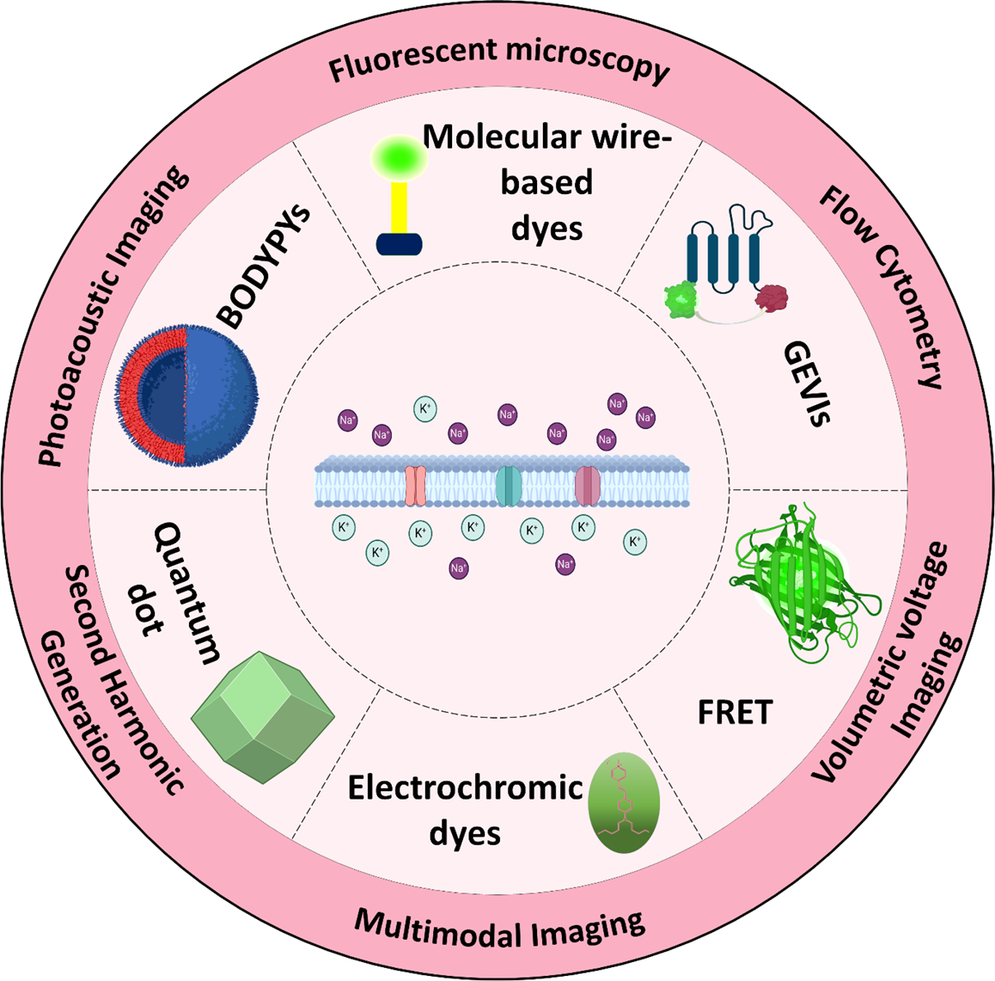Published online by Cambridge University Press: 16 January 2025

The membrane potential is a critical aspect of cellular physiology, essential for maintaining homeostasis, facilitating signal transduction, and driving various cellular processes. While the resting membrane potential (RMP) represents a key physiological parameter, membrane potential fluctuations, such as depolarization and hyperpolarization, are equally vital in understanding dynamic cellular behavior. Traditional techniques, such as microelectrodes and patch-clamp methods, offer valuable insights but are invasive and less suited for high-throughput applications. Recent advances in voltage indicators, including fast and slow dyes, and novel imaging modalities such as second harmonic generation (SHG) and photoacoustic imaging, enable noninvasive, high-resolution measurement of both RMP and membrane potential dynamics. This review explores the mechanisms, development, and applications of these tools, emphasizing their transformative potential in neuroscience and cellular electrophysiology research.
This article was originally published with incomplete funding information. The error has been corrected and the online HTML and PDF versions updated.
Please note a has been issued for this article.